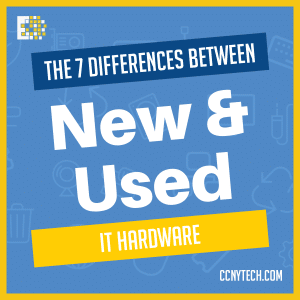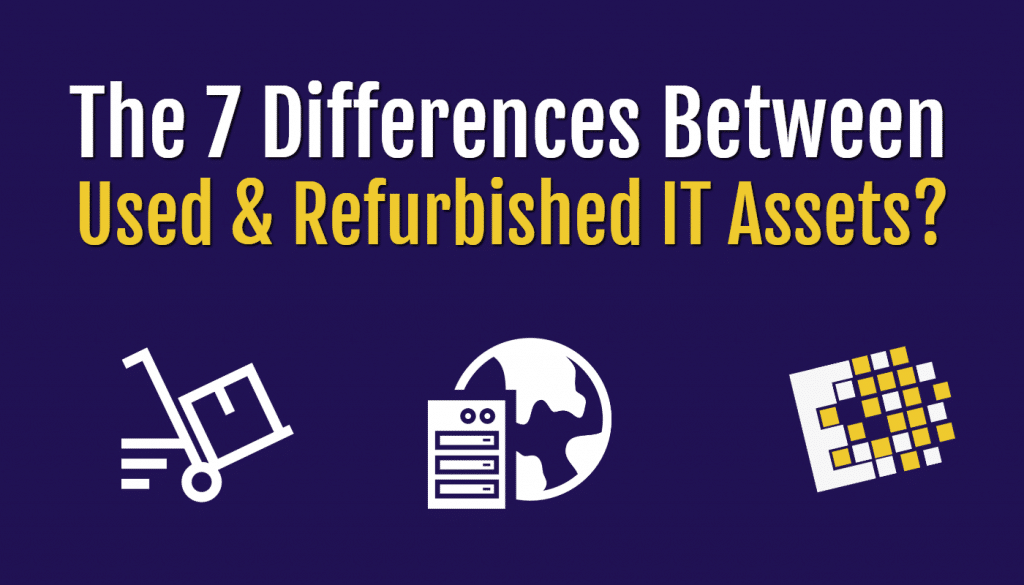 Have you ever thought about what the difference is between a used server and a refurbished server? What about the difference between used networking equipment and refurbished networking equipment? If so, you aren’t alone. While the term “used” and “refurbished” signify two very different hardware standards, some companies use both terms interchangeably, leaving you asking yourself which is which.
Have you ever thought about what the difference is between a used server and a refurbished server? What about the difference between used networking equipment and refurbished networking equipment? If so, you aren’t alone. While the term “used” and “refurbished” signify two very different hardware standards, some companies use both terms interchangeably, leaving you asking yourself which is which.
It’s essential to understand that used and refurbished IT hardware isn’t the same thing. Used hardware was owned by someone else while refurbished hardware is pre-owned hardware that has been submitted to rigorous testing, inspection and has been reset to the original factory settings. So, in a side-by-side comparison, refurbished servers beat used servers. Likewise, refurbished networking equipment is a better solution than used networking equipment.
Want more specifics? Let’s look closer at the seven major differences in what you get when you buy refurbished servers rather than used ones. These differences apply to refurbished and used networking equipment as well as for storage equipment.
Authenticity. Whenever you buy a server that isn’t new off of the original equipment manufacturer (OEM) factory line, you should question whether the item is authentic or not. Unfortunately, counterfeit electronics is big business and no one wants to purchase a second-hand piece of equipment only to find out that it is not what it was billed to be. Established refurbishment providers take great pains to verify the authenticity of the used servers they refurbish and sell. With this in mind, you are much safer buying a fully refurbished server instead of one that is simply billed as “used.”
Physical condition. One of the first things that makes refurbished servers different than and superior to used servers is physical appearance.
Factory settings. During the refurbishment process, servers are returned to the original factory settings whenever possible. Each server is returned to like-new condition in how it performs. From this point, the server is, for all intents and purposes “new” other than the fact that it was owned and used by someone else already. When you buy “used” servers, you get what you get and it’s unlikely that the server will be returned to the original factory settings.
Testing. Refurbished servers are rigorously tested to ensure that it is reliable and works as promised. In fact, most refurbished gear is tested multiple times during the refurbishment process. The only testing that a used server is likely to get is whether it lights up when the power button is turned to “on.”
Warranty. This one is a biggie when it comes to the differences between used servers and refurbished servers. The basics here is that quality refurbished equipment will come with a warranty. End of story. Used servers are sold “as-is” and are unlikely to come with a warranty of any kind.
Recourse, if needed. Nothing about Used IT hardware is guaranteed, so if you unintentionally buy a dud, you’re stuck with it. What’s worse is that you most probably don’t have much recourse with the seller. When you purchase refurbished servers from a reputable provider, your purchase is proven to perform and in the unlikely event that the equipment doesn’t perform, a reputable seller will work with you to ensure you get an adequate replacement.
In summary, refurbished gear from a reputable source such as CCNY Tech in Utica, NY outperforms what you’ll wind up with if you buy used IT hardware. By ensuring that your server, storage, and networking gear is refurbished rather than used, you can stretch your IT budget without sacrificing reliability.
 Article Author:
Article Author:
Lynn Brennan has been working in the IT industry for 12 years as a purchaser, ITAD manager, and broker of used equipment. She specializes in HP and Dell, but also, buys of all brands of servers, switches, memory, drives and CPUs.
Contact CCNY Tech for all your refurbished IT Hardware needs. Call 1-800-566-4786 or visit ccnytech.com to learn more.

